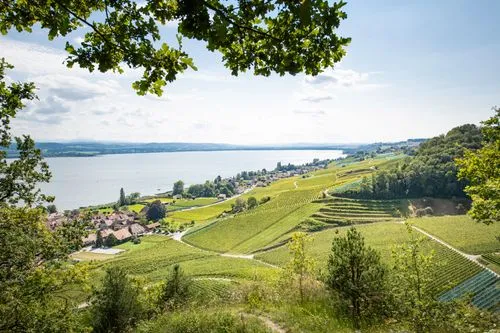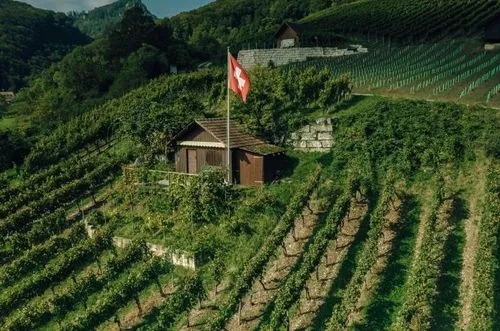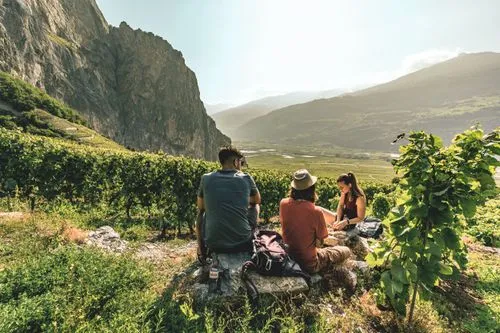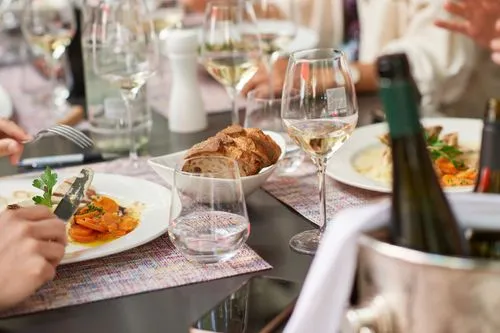Chardonnay

Grape variety White
Serving temperature:
8-12°C
Technical details Chardonnay
Wine-growing area in Switzerland: 409 hectares
The taste of Chardonnay
Chardonnay is a versatile grape variety whose flavour is highly dependent on terroir and ageing method. In its fresh, non-oaked form, it has aromas of green apple, citrus fruit, pear and sometimes tropical fruit such as pineapple. The acidity is generally pleasant and well-balanced.
Barrel-aged Chardonnay wines, on the other hand, develop more complex aromas such as vanilla, butter, hazelnut or caramel, often accompanied by a creamy texture.
Food and wine pairing with Chardonnay
Fresh, unoaked Chardonnays go perfectly with fish, seafood, sushi or light salads. Barrel-aged wines, with their complex character, go perfectly with poultry, veal, creamy pasta and soft cheeses such as Brie and Camembert.
History and culture of Chardonnay
Chardonnay originated in Burgundy, France, and also became established in Switzerland during the 20th century. The introduction of Chardonnay in Switzerland benefited from the worldwide popularity of this grape variety and its ability to adapt to different terroirs. Today, it is an essential component of quality Swiss wines and is often vinified as a single variety, but it is also used in blends.
Chardonnay thrives on limestone soils and benefits from Switzerland's temperate climate.
Distribution of Chardonnay in Switzerland
Chardonnay is grown mainly in the wine-growing regions of Vaud, Geneva and Valais. In German-speaking Switzerland and Ticino, Chardonnay is often vinified into complex wines aged in oak barrels. In French-speaking regions, Chardonnay is used more for sparkling wines, which are mostly vinified using the traditional method.
Distribution of grape varieties
Chardonnay is grown in several wine regions
28%
21%
17%
12%
11%
10%
FAQ: Frequently asked questions about the Chardonnay grape variety
There are over 100 synonyms or specific local names for the Chardonnay grape variety. Examples include Morillon (Austria) and Gelber Burgunder (Germany).
The special thing about Chardonnay is its extraordinary versatility. This grape variety can thrive in almost any climate, from cooler regions where it has fresh acidity and mineral notes, to warmer regions where it develops riper, tropical aromas. Chardonnay is also one of the few grape varieties that produces wines of excellent quality both when made without wood and when aged in barrels.
The length of time you can keep a Chardonnay depends very much on its style and ageing. Fresh, unoaked Chardonnays should be drunk young, generally within 1 to 3 years. Barrel-aged Chardonnays, on the other hand, can be kept for longer, often 5 to 10 years or more.
To visit our site, you must be of legal drinking age in your country of residence.




